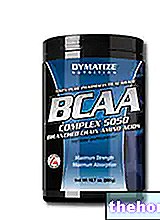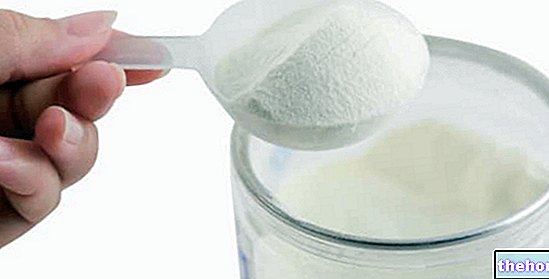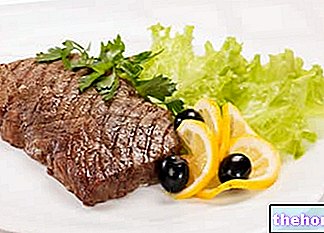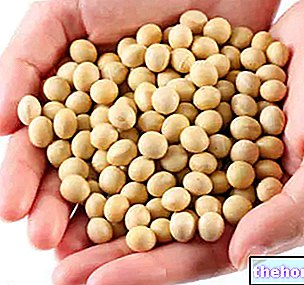See also: Escin and Escin Beta-sitosterol in cosmetics
Escin is the mixture of saponins extractable from the seeds (13%), from the bark (1%) and from the leaves (0.2%) of horse chestnut, to which it confers the known medicinal properties. Not surprisingly, the various extracts of Horse chestnut are standardized precisely in aescin, and indicate its percentage content on the label to facilitate its dosage; on the market, it is also possible to find this isolated fraction of triterpene glycosides, defined precisely as aescin, but at the same dose it guarantees a therapeutic effect lower than " total extract.

Horse chestnut increases the resistance of the capillaries and reduces their permeability; it therefore exerts an anti-edema action, supported by the ability to intervene on the local electrolytic exchange, favoring the removal of accumulated interstitial liquids. This capillarotropic and drainage action, together with anti-inflammatory properties and a mild antithrombotic activity, make horse chestnut extracts standardized in escin indicated in the presence of peripheral venous insufficiency disorders (swelling, heaviness, pain, itching, etc.), varices and postphlebitic syndromes, hemorrhoids, cellulite and capillary fragility.
In fact, the phytocomplex recognizes other active molecules with proven anti-inflammatory action, such as elucoside (coumarin glycoside), and antioxidant, such as flavonoids (quercetin and kampferol) and procyanidins.
Escin is also contained in some medical specialties, such as Essaven gel ® ointment, which contains it (1%), together with sodium heparin (10,000 IU / 100g) and phosphatidylcholine (0.8%). to avoid local irritation phenomena, often encountered when escin is used externally in concentrations higher than 1% and in the absence of anti-inflammatory or cholesterol derivatives. For internal use, however, high doses of escin can cause damage to the glomerulus and tubule renal; consequently its use, like horse chestnut extracts, is contraindicated in the presence of nephropathies or renal insufficiency.
In phytotherapy, for internal use, standardized extracts are used, in order to guarantee a daily dosage of about 100 mg of escin; normally this dose corresponds to 500-730 mg of extract, to be divided into two single intakes of 250-365 mg, in controlled-release formulas to avoid gastrointestinal disorders.
The medicinal indications of escin are the same as shown in the table on the side; it is in fact used, for external use (massage is important) or internal, in the treatment of various types of edema, varicose veins, hemorrhoids, cellulite, hematomas and bruises, thanks to the its ability to increase capillary resistance and decrease its permeability. Aescin is also indicated in the presence of chronic venous insufficiency, thanks to its anti-inflammatory and venotonic effects (it increases venous contractility, reducing the stagnation of blood in the lower limbs and favoring its return to the heart). Therefore, the standardized horse chestnut total extracts, and the aescin itself, can be helpful in the presence of swelling and a sense of heaviness, tiredness or itching in the legs.
Select plant Fir Acacia Acerola Sorrel Yarrow Yarrow Yarrow Aconito Adatoda Garlic Agnocasto Agrimonia Alchemilla Alkekengi Aloe Altea Witch Hazel Ammi or Visnaga Pineapple Andrographis Anemone Pulsatilla Angelica Anise Star Anise Japanese Star Anise Bitter Orange Bitter Areca Arnica Harpagophytum Arpagophyte Artemisia Asteragus Basil Asparagus Asparagus Peruvian Asparagus Asparagus Asparagus Hawthorn Boldo Borage Shepherd's Purse Boswellia Bucco Butea superba Cocoa Coffee Cajeput Calamus Calamus Marigold Camedrio Chamomile Roman Chamomile Camphor Cinnamon Ceylon Maidenhair Capuchin Artichoke Cardamom Cardiac Thistle Asian Thistle Carvi Cascara Cassia Catecu Catha Cabbage Celandine Chicory Centaurea Cinnamon Cypress Celandine Chives Cypress Coca Cola Colchico Combreto Condurango Comfrey Coriander Cranberry Barberry American Chrysanthemum Cumin Turmeric Damiana Digital Dioscorea Drosera Dulcamara Dunalilella Echinacea Eder a Ephedra Elenio Eleutherococcus Helichrysum Evening primrose Horsetail Alfalfa Erica Euphrasia Erisimo Escolzia Eucalyptus Farfara Farfaraccio Calabar bean Fenugreek Fennel Phytolacca Frangola Ash Fumaria Japanese Mushrooms Galega Ganoderma lucidum Garcinia Cambogia Mulberry Gentian Broom Ginkgo Ginkgo Guipana Guipana Gynestra Ginkgo Hibelia Gymnasium Hibiscus Guarulp St. John's Wort Horse Chestnut Ispaghul Hyssop Jaborandi Kava kava Konjac Laminaria Cherry Laurel Lavender Lemongrass Lespedeza Lovage Icelandic Lichen Lemon Flax Lippia Licorice Lobelia Hops Maca Marjoram Maize Mallow Manna Marrubio Marrubio d "water Matè Melaleuca Meliloto American Lemon balm Myrtle Myrama Walnut Nutmeg Walnut vomica Olive tree Meadowsweet Ononide Opuntia Oregano Orthosiphon Nettle Poppy Papaya Parietaria Feverfew Passiflora Chilli Perilla Periwinkle Phyllanthus Plantain Picrorhiza Pilosella Pino Pisci dia Podofillo Polygala Grapefruit Parsley Psyllium Pueraria mirifica Butcher's broom Pygeum Quassia Oak Rhubarb Ratania Rauwolfia currant Castor bean Rhodiola Rosehip Rosemary Rue Willow Sarsaparilla Sage Elderberry Sassafras Sedum Ergot Senna Serenoa Repens Soybean Solidago Tansy Taraxus Tamarind Tamarind Tamarind Tamarind Tamarindo Ursina Valerian Vanilla Mullein Verbena Veronica Viburnum Vinca Pansy Mistletoe Vine Withania Yohimbe Saffron Ginger Pumpkin Select disease Juvenile Acne Rosacea Tinnitus Tinnitus Aerophagia Tendon Affections Afonia Aphthae Algias Functional Halitosis Breastfeeding Allergy Anemia Anguish Anxiety Arteriosclerosis Asthrosis Asthrosis Arthritis Arthritis Men Sex Woman Blepharitis and Conjunctivitis Eye bags Bronchitis Gallstones Kidney stones Salivary stones Baldness Androgenetic Candida Fragile hair Caries Headache Cellulitis Motion sickness Cystitis C limaterio Cholecystopathy High cholesterol Ulcerative colitis Colonoscopy Contusions Hematoma Convalescence Couperose Depression Dermatitis Diaper dermatitis Diabetes Diarrhea Erectile dysfunction Dyslipidemia Dysmenorrhea Dyspepsia Disturbances of vision Hemorrhoids Epistaxis Herethism Heart disease Fever Fibromyalgia Gastro-intestinal disease Flatulence Hypertension Fibromyalgia Gastrointomnia Jaundice Laryngitis Renal lithiasis Toothache Sore throat Thinness Menopause Meteorism Mononucleosis Alzheimer's disease Crohn's disease Nausea Vomiting Obesity Dark circles Onychomycosis Osteoporosis Dry skin Periarthritis Piorea Low pressure Prostatitis Psoriasis Colds Breast fissures Anal fissures Gastro-nasal rhinitis Senescence Premenstrual Syndrome Sinusitis Quit smoking Overweight Fatty liver Constipation Stomatitis Stress Cough Triglycerides high Ulcer Burns Nails Brittle flashes Heat Warts Dizziness Properties herbal Tanning Abortive adaptogenic Aphrodisiac bittering analgesic anesthetic anorectics analgesic antacid anti-allergic anti-asthmatic Antibiotic catarrh Anticellulitiche anticonvulsant Antidiaforetiche antidiarrheal edematous anthelmintic antiemetic Antiemorroidarie antiphlogistic Antiidrotiche Antinevrotiche Antioxidants antipyretic antirheumatic antiscorbutic Antiseptic antispasmodic anti-uric Aperitive Flavoring Astringent Balsamic Bechiche Capillarotrope Cardiotonic Carminative Cathartic Caustics Healing Cholagogues Choleretic Dyes Decongestants Deodorants Purifying Diaphoretic Cleansers Disinfectants Detoxifiers Thirst quenching Diuretics Exciting Emetics Emmenagogues Emollients Hemostatic Energies Hepatoprotectors Expectorants Eupepticus Moisturisers Galactosensitizers lanti Hypertensive Hypnotic Hypoglycemic Hypotensive Irritants Laxatives Soothing Narcotic Nerves Nutrients Odontalgic Pectoral Purgative Revulsive Remineralizing Refreshing Rubefacient Scialagoghe Sedative Soporifugas Sneezing Stomachic Stomatics Narcotic Vascular Tightenitis
















.jpg)











